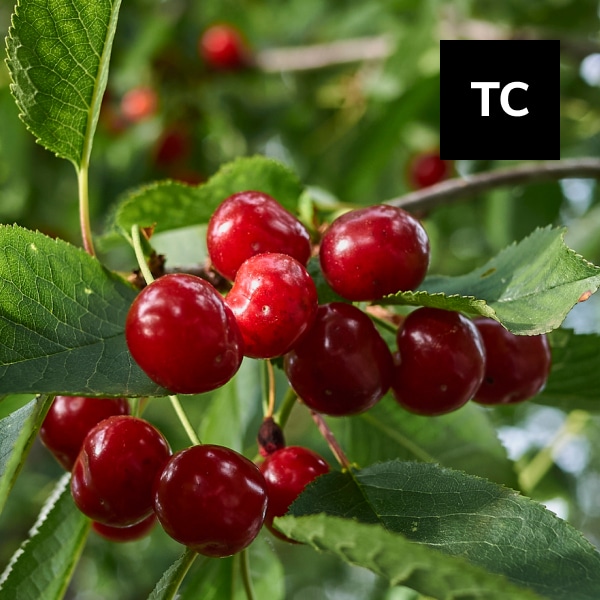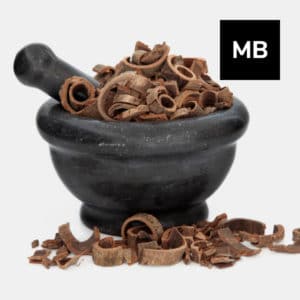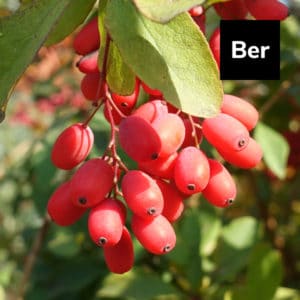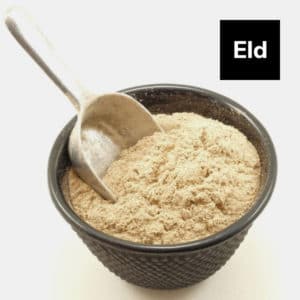Overview
Tart cherries are high in antioxidants such as flavonoids, carotenoids, and vitamin C. They are very high in anthocyanins. Tart cherry juice has been demonstrated in studies to reduce oxidative stress, inflammation, and arthritic pain.
Key Benefits
- Antioxidant protection that is powerful
- Boosts immunity
- Aids in blood pressure reduction
- Helps in inflammation reduction
- Helps minimize gout attacks
- May help relieve pain from peripheral neuropathy
- Improves sleep quality
- Aids in the reduction of post-workout muscle pain
- Helps with exercise performance
- Improves the health of the heart and brain cells
History of Usage
The ancient Greeks, Persians, and Romans, which imported them to England well before the 1st century AD, preferred sour cherries.
Their cultivation became popular in the United Kingdom during the reign of Henry VIII in the 16th century. They became a popular crop among Kent growers, and by 1640, over a dozen identified cultivars had been recorded. Sour cherries were first grown in Massachusetts by English immigrants.
Tart cherries are now utilized in baking, vinegar production, drinks, and nutritional supplements.
Biochemistry
Substantial levels of chlorogenic and neochlorogenic acids as well as anthocyanins (Canidine-glycosylruthinoside) and flavonoids were found in the tarts cherry concentrate juice (quercetin-rutinoside). Anthocyanins are anti-inflammatory chemicals that may aid in the treatment of some chronic disorders. Tart cherry juice dramatically lowered inflammatory biomarkers that are frequent in chronic diseases in a randomized, placebo-controlled study.
According to one study, tart cherry fractions and their bioactive ingredients could be promising antiplaque agents by targeting oral pathogen biofilm development and adhesion capabilities. Furthermore, its ability to improve epithelial barrier function may protect the underlying connective tissue from microbial invasion.
The only fruit with a high melatonin concentration is tart cherries. Likewise, tart cherries are high in vitamins A and C. They’re also high in dietary fiber, potassium, copper, and manganese.
Recent Trends
The Tart Cherry Market was worth USD 615.7 million in 2018 and is estimated to be worth USD $693.8 million by 2025, growing at a CAGR of 1.72 percent during the forecast period.
Tart flavors are on the rise, according to trend analysts, due to customers’ evolving palates, which want a less sweet taste. Consumers are enjoying sour and less sweet foods and beverages. According to Flavorchem, tart, sour, and fermented flavors have entered the mainstream.
Datassential discovered that “sour” is included on 63 percent of restaurant menus and is in the 90th percentile for future growth potential – anticipated to expand +3 percent on menus in the next four years – based on 4,800 restaurants typical of the U.S. restaurant census in 2020.
According to Datassential’s MenuTrends, sour has grown 44 percent in menu penetration over the last ten years.
With functional benefits accounting for 80 percent of sour’s top growing claims, there is a chance to make a product that is both functional and tasty.
Tart cherries have benefited from a convergence of trends, ranging from consumer demand for sour flavors to scientific studies indicating benefits for sleep, exercise recovery, and heart health. According to Mintel’s Global New Products Database, the number of new foods and beverages containing tart cherries has climbed by 113% in the last five years.
Tart cherry snacks, such as nutrition bars, energy bites, trail mix, granola, jerky, and other meat snacks, saw the most growth in new tart cherry items (35 percent). Tart cherry beverages are also becoming increasingly popular (28 percent). Many of the drinks, such as tart cherry kombucha, drinking vinegars, sparkling waters, and lemonade, feature sour flavors.
A majority of consumers (55%) stated they would pay more for items manufactured with tart cherries, with health-conscious shoppers (70%) much more ready to pay more if tart cherries were on the label. The term “superfruit” has a beneficial influence on purchase behavior, particularly among millennials and health-conscious consumers.
Precautions
Tart cherry is safe for most people, including pregnant and breastfeeding women. Some individuals may experience diarrhea after taking tart cherry products.
References
- Traustadóttir T, Davies SS, Stock AA, Su Y, Heward CB, Roberts LJ 2nd, Harman SM. Tart cherry juice decreases oxidative stress in healthy older men and women. J Nutr. 2009 Oct;139(10):1896-900. doi: 10.3945/jn.109.111716. Epub 2009 Aug 19. PMID: 19692530; PMCID: PMC3151016.
- Kent K, Charlton KE, Jenner A, Roodenrys S. Acute reduction in blood pressure following consumption of anthocyanin-rich cherry juice may be dose-interval dependent: a pilot cross-over study. Int J Food Sci Nutr. 2016;67(1):47-52. doi: 10.3109/09637486.2015.1121472. Epub 2015 Dec 13. PMID: 26654244.
- Davis, Kristina. Tart cherry juice consumption reduces blood pressure in older adults. University of Delaware. 2016 thesis. http://udspace.udel.edu/handle/19716/19851
- Carson, Cindy A., Tart Cherry Juice as a Treatment for Peripheral Neuropathy. Integr Med. 2015 Feb;14(1): 48-49.
- Zhang Y, Neogi T, Chen C, Chaisson C, Hunter DJ, Choi HK. Cherry consumption and decreased risk of recurrent gout attacks. Arthritis Rheum. 2012 Dec;64(12):4004-11. doi: 10.1002/art.34677. PMID: 23023818; PMCID: PMC3510330.
- Howatson G, Bell PG, Tallent J, Middleton B, McHugh MP, Ellis J. Effect of tart cherry juice (Prunus cerasus) on melatonin levels and enhanced sleep quality. Eur J Nutr. 2012 Dec;51(8):909-16. doi: 10.1007/s00394-011-0263-7. Epub 2011 Oct 30. PMID: 22038497.
- Özen M, Özdemir N, Ertekin Filiz B, Budak NH, Kök-Taş T. Sour cherry (Prunus cerasus L.) vinegars produced from fresh fruit or juice concentrate: Bioactive compounds, volatile aroma compounds and antioxidant capacities. Food Chem. 2020 Mar 30;309:125664. doi: 10.1016/j.foodchem.2019.125664. Epub 2019 Oct 17. PMID: 31699553.
- Ben Lagha A, LeBel G, Grenier D. Tart cherry (Prunus cerasus L.) fractions inhibit biofilm formation and adherence properties of oral pathogens and enhance oral epithelial barrier function. Phytother Res. 2020 Apr;34(4):886-895. doi: 10.1002/ptr.6574. Epub 2019 Dec 17. PMID: 31846135.
- Montmorency U.S. Tart Cherries. The Trend of Tart: Why Tart Cherries are a Red Hot Ingredient for Product Developers and Chefs. https://www.choosecherries.com/wp-content/uploads/2021/02/TREND-OF-TART_DIGITAL_VERSION.pdf




